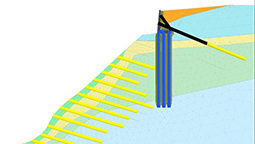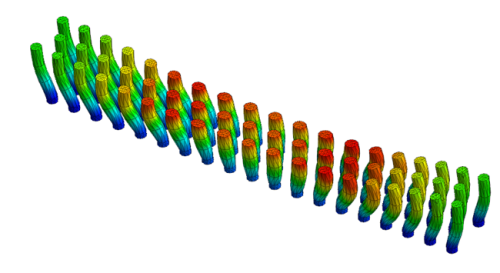The calculations of substructures are an integral part of the development of building design solutions. They are performed during the design of the objects adjoining the ground:
- substructures;
- embedded structures;
- retaining walls;
- embankments;
- supporting walls.
Geotechnical calculations performed at early stages of design allow to:
- assess possible construction costs
- minimize the risks of increasing the scope of construction and assembly works;
- prepare the design specification correctly;
- monitor the quality of work of organizations performing inspection of existing facilities;
- assess the quality of engineering geological investigation.
Calculations allow considering various options for the operation of building structures that are closest to the reality and making an economically and technologically sound solution.
Calculation principles
Substructure calculations are based on the analysis of collaboration of bottom soil and foundations (or other embedded structures) by creating a 3D-model. During the calculations the substructure soil strain-stress state analysis and settlement computation are held as well as the impact of new construction on facilities in close proximity. After the calculations are completed the design engineer decides on the type of the foundation or the substructure, dimensions of the reinforced concrete structures, diameter and rod spacing as well as on the method of building structures reinforcement (if necessary), types of the applied technologies and their sequence.
The initial data for the calculation are:
- technical report on engineering investigation;
- land plot layout diagram;
- technical report on the inspection of existing buildings which appear in the area affected by construction;
- construction and space planning decisions of the building being designed.
Plaxis, GeoWall, Lira and other software are used for calculations.
Geotechnical feasibility of construction
One of the types of geotechnical calculations is a geotechnical study, which is a complex work. It consists of the following stages:
- the detailed analysis of the construction site conditions;
- the study and analysis of soil parameters;
- calculation and choice of a foundation option or a building envelope;
- analysis of soil bearing capacity;
- analysis of the settlement of the future building;
- analysis of deformation ratio of formerly constructed buildings situated within the influence of new construction or the opposite influence.
In big cities with densely built-up areas the decision on the foundation type, retaining wall and excavation procedure should be made by considering the necessity to minimize the risk of potential impact of the building under construction on formerly built objects. The acceptable impact values depend on the state of the existing object as well as its structural scheme.




